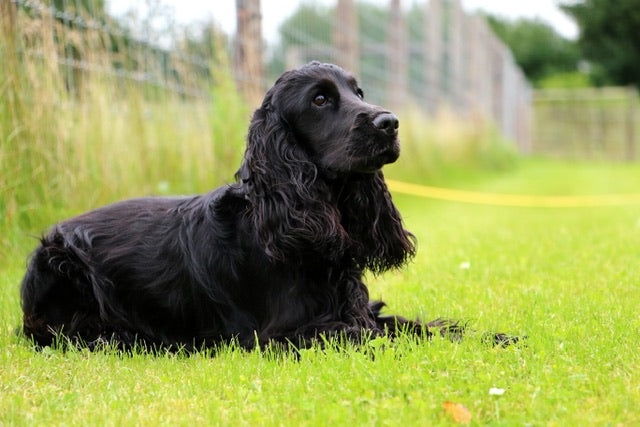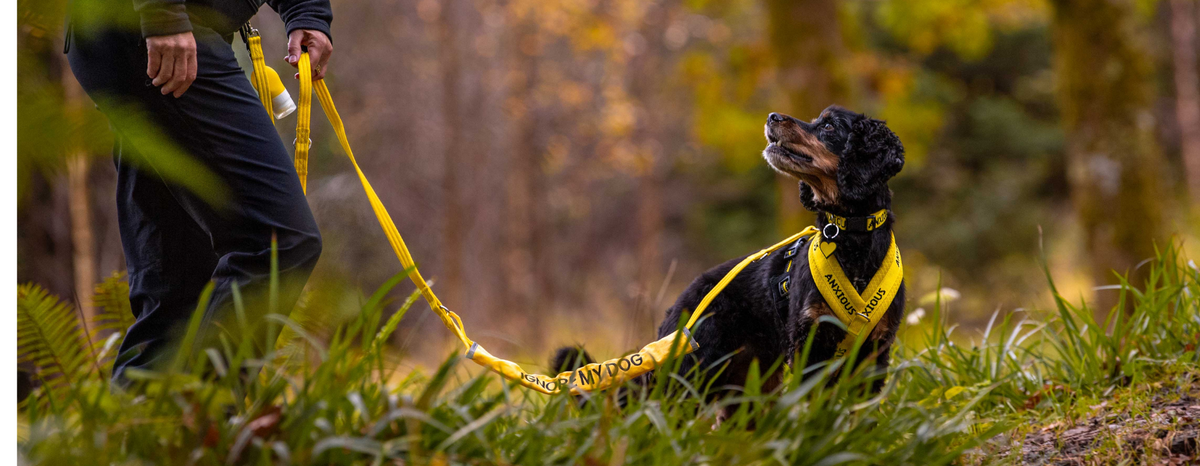
How Much Exercise Does Your Dog Need Every Day?
WRITTEN BY
Holly Kinmont
Share
Just like us humans, dogs need exercise, but while a wagging tail is a pretty good sign they’re waiting to go on a walk, our dogs aren’t always the best at telling us if they’re feeling tired.
All good dog owners know how vital it is to take their dog on regular walks, but it’s not always obvious just how regular those walks should be, or indeed how long they should be either. To make matters even more complicated, the amount of exercise needed varies widely between different breeds, sizes and ages.
Here we’ll demystify doggy exercise, and set the record straight on just how much exercise your pooch needs.
Tailoring Exercise To Your Dog
As a general rule of thumb, dogs need 1-2 walks per day, but no two dogs are the same, and certainly no two breeds are the same. Different breeds come with different physical characteristics; some breeds are bigger, some are smaller, and some are lazier! It’s important to research your dog’s breed to gain an understanding of their expected energy levels.
For example, a small Yorkshire Terrier will definitely have a lot less energy, or indeed a need for exercise, compared to an athletic German Shepherd. Smaller breeds like Yorkshire Terriers, Chihuahuas or King Charles Spaniels need around 1-2 hours of exercise per day, while bigger breeds such as Boxers and Dalmatians need more than two hours per day. For working breeds, the clue is in the name, and breeds such as Dobermanns and Great Danes need even more than that, so make sure you’ve got a good pair of boots and a robust lead!
Beyond The Breed
Breed isn’t everything when it comes to exercise. Age and health is just as important in deciding how much exercise your dog needs.
Just like you, the older a dog gets, the more they’ll need to slow down. Dogs in their senior years are more susceptible to orthopaedic conditions such as arthritis and general joint and mobility issues, meaning intense exercise could result in them experiencing pain or discomfort. An elderly dog will also be more prone to cardiovascular and respiratory issues causing shortness of breath if they exercise too much.
But old age isn’t a reason to stop exercising altogether, in fact much the opposite. Keeping your dog moving is vital in ensuring the longevity of their overall health, but just make sure to keep it little and often; short, regular strolls are perfect for keeping their muscles and joints flexible.

Different Types of Exercise
Walking isn’t everything when it comes to exercise, and not every owner can walk their dog for hours on end every day.
Thankfully there’s plenty of other ways to incorporate more exercise into your dog’s daily routine. You’re probably implementing plenty of one such method already - play! Playing with your dog is a fantastic way to give them more exercise. Whether you’re playing fetch, hide and seek, or just rolling around on the floor, plenty of fun and frolics in the comfort of your living room can play a big part in contributing towards your dog’s overall fitness.
Walking itself doesn’t have to consist solely of dedicated dog walks either, you can incorporate walks into your own fitness regime, whether you jog or cycle, you can bring your pooch along too. Just start them off slowly first before going at full pelt! If your dog seems too tired however, they might not be able to keep up with you on a regular basis, so keep an eye on them the first time you try it out.

Exercising Safely
Safety is key when exercising your dog. There’s multiple hazards to keep in mind, including heat-stroke, icy weather, and traffic.
The weather can present a variety of hazards, depending upon the time of year. If it’s summer, keep an eye on temperatures; if it gets too hot, heatstroke is especially dangerous for dogs, so try to take them on walks at cooler times of day such as early morning or late in the evening.
In the winter, when taking them on walks in very cold weather, such as in snow or icy conditions, look out for signs of shivering, trembling or unexplained barking. Each of these could be a sign of them feeling too cold, meaning it’s time to take them indoors. If your dog has a short coat, consider a jacket to provide them with some added insulation. A light-up or reflective collar can also be useful to keep track of them while off their lead on dark winter evenings, and a light-up ball can also keep you both playing fetch, no matter how little daylight there is!
Last but not least, a good lead is vital for keeping your four-legged friend safe. In a wide open, safe space, letting them off their lead is a great way to give them some exercise, but if you live in a busy, urban area with lots of traffic, keep them on their lead until it’s safe.
Time For Walkies!
Every good dog owner wants the best for their dog, but deciding how much exercise they need isn’t always clear cut; indeed, as we’ve shown, no two dogs are the same.
Doing your research, and understanding your dog’s health, age and breed all go a long way in creating the perfect exercise regime specifically tailored to your furry friend.
Ensuring they get the right amount of exercise will protect their overall health and fitness, just as feeding them healthy, high quality dog food will. Time to get moving!





